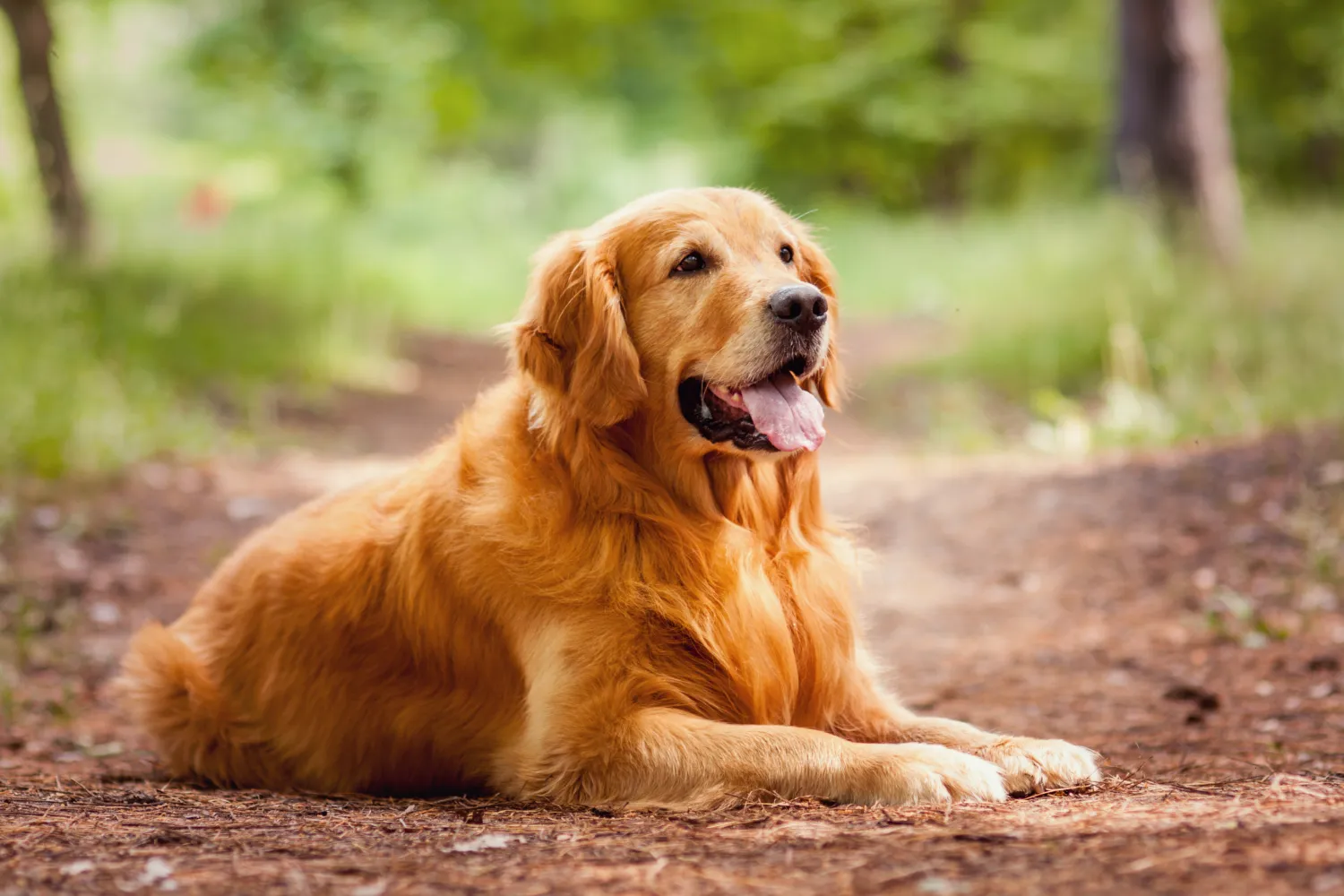
BOGO: buy a box of Longevity15 and get Yummy Combs free!
Shop now and get the BOGO deal today!
Joseph Roetheli, PhD

Highlights:
Many breeds of dogs fall into the “large breed” category.
Learning to care for these dogs is essential in protecting their longevity and healthspan.
Larger dogs tend to have shorter lifespans than their smaller counterparts. One way to support their longevity is through a supplement called Longevity15.
You want a dog that isn’t too small and isn’t too large. Like Baby Bear’s porridge, you want a dog that is “just right.” A large-breed dog may be the perfect fit. Large breeds weigh between 50 and 90 pounds, placing them slightly larger than breeds like basset hounds or cocker spaniels but smaller than extra-large breeds like mastiffs.
If you think you’re ready for a large breed dog, we’ve got everything you need to know about how much they’ll cost to own, special care needs, and how much space they need to thrive.
Large breeds are classified based on weight, as with other dog breeds. These breeds are a step above medium breeds (which weigh 20 to 60 pounds) and a step below giant breeds (which way over 90 pounds). These breeds are often considered the perfect size for people who want a hearty (but manageable) dog.
Large dog breeds include:
This isn’t an exhaustive list, but it should give you an idea of the relative size of a large-breed dog. These dogs are usually between 20 and 40 pounds at six months of age.
Dogs that are classified as large breeds develop similarly to giant breeds. They will grow larger than the average puppy grows and can trick you into believing they are more mature than they are. Keep in mind that even though your dog is growing, they are still considered a puppy for up to two years.
Your dog’s growth also reflects their maturity level. While smaller dogs may mature more quickly, larger dogs simply take more time. Large dogs are smart, but as puppies, they may appear cumbersome. It’s important to watch them closely while they play to make sure they do not injure themselves.
Big dogs take big bucks. If you decide on a large-breed dog, you will need to be able to afford their care. Large dogs require more food than toy breeds or small breeds.
Normally, a large-breed dog will need 3.5 to 4 cups of food per day. The cost of feeding a dog a healthy diet can quickly add up.
You’ll also need to consider that monthly medications (like flea, heartworm, and tick meds) will cost more because they are prescribed and sold based on your dog’s weight. The larger the dog, the larger the cost of the medication. Veterinary services may also cost you more.
Routine vaccinations, exams, and diagnostic fees may be more expensive for larger breeds. Check with your preferred veterinarian to find out if they accommodate large dogs and, if so, what the fee difference is for treatment.
If you have your dog groomed, the expense may be higher for a large dog. Larger dogs with longer coats will require more bathing and grooming than small and medium breeds. They may also require the removal of dreadlocks and haircuts more frequently.
Lastly, if you plan to purchase pet insurance, it is a good idea to talk to your insurance agent before adopting a large-breed dog. Some breeds may have health and personality problems that make them more difficult or expensive to insure. If you want pet insurance but adopt a breed that isn’t covered, you could find yourself in a bind.
Big dogs need big space, but that doesn’t mean you can’t have a large breed if you live in a smaller home. Many large breeds require less exercise and activity than some smaller breed dogs, so they make better pets for apartments and smaller spaces.
One thing all large dogs need is a wide open space to play and roam outdoors. This space does not necessarily have to be your backyard, but it is important to make sure you have access to a leash-free park or open space where you can regularly take your dog to run and play.
Another consideration is the space needed to accommodate your large-breed dog in your home. If you plan to crate-train your dog, you’ll need to buy a crate that is big enough to allow your dog to stand up and move around, and you’ll need a safe place to put it. You’ll also need room for larger dog beds, food dishes, and water bowls.
All dogs benefit from training, but the bigger the dog, the bigger the need for training will be. Smaller dogs can probably get away with excessive yapping and tugging on the bottom of your pant leg. Larger dogs have large barks and can tug a person until they fall.
Getting your dog appropriate training can help you avoid problematic behaviors like:
An added benefit of training is that your dog will learn obedience, which can help keep them safe and help others feel comfortable around them. Dogs that sit, walk, and come when they are called trust their owners and even experience less anxiety.
All dogs have special needs and health concerns, and large-breed dogs are no different. Large breeds can suffer from bone and joint issues, bloat, and arthritis. Understanding the symptoms and signs of these ailments can help you get your dog treatment immediately if it is needed.
Traveling with your dog is another special need. Large dogs need larger accommodations in cars and on airplanes. For air travel, contact the airline to find out where your dog will be held (usually in the baggage or cargo hold) and the requirements of their crate. For short car trips, you’ll still need to accommodate your dog in a safe space or crate that fits in your vehicle.
Large breed dogs can live between 10 and 12 years. You can improve your dog’s longevity by ensuring they get plenty of exercise, eat a balanced diet, and maintain a healthy weight.
Another great way to support their longevity? Supplementation.
Longevity15 is the first and only supplement available for dogs with pentadecanoic acid or C15:0. C15:0 is an odd-chain, saturated fatty acid that is the first essential fatty acid discovered since the omegas over 90 years ago.
C15:0 helps support your dog’s heart health and liver function by targeting their cells. C15:0 deep dives into cells to keep them supported, which helps support your dog’s entire body.
C15:0:
The C15:0 in Longevity15 helps support your large dog’s overall wellness and is one of the smartest moves you can make to help your dog live a longer life. Best of all, it comes free of side effects and won’t ever give them any fishy breath. That means fresher breath and more close cuddles.
Before you adopt, here are a few pros and cons of owning a large breed dog.
Your large-breed dog will be a great addition to your family if it checks all the boxes you want from an animal. Knowing how to care for a large breed is essential before adoption, so you aren’t overwhelmed with any “large” surprises.
Just be sure to invest the time and resources they need for a full and happy life, and grab some Longevity15.
Sources:
HSNT | When is a Puppy Considered an Adult Dog?|HSNT.org
Dog Feeding Chart: How Much Food Should I Feed My Dog? | PetMD
Expert Tips on How to Calm an Anxious Dog, Soothe Dog Anxiety|American Kennel Club.org
Updates, coupons, deals, and more!
Type anything...
We use cookies to provide you the best possible experience on our website. You consent to the usage of cookies by continuing to view our website. See our Privacy Notice for more information.